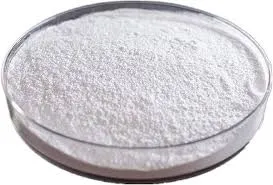
Nov . 22, 2024 16:20 Back to list
hydroxyethyl cellulose powder
Understanding Hydroxyethyl Cellulose Powder A Versatile Polymer
Hydroxyethyl cellulose powder (HEC) is a non-ionic, water-soluble polymer derived from cellulose, a natural polymer found in plant cell walls. Due to its unique properties, HEC has gained significant attention across various industries, including cosmetics, pharmaceuticals, construction, and food.
Chemical Structure and Properties
HEC results from the reaction of ethylene oxide with cellulose, which modifies the cellulose's hydroxyl groups. This modification enhances the solubility of cellulose in water, making it an effective thickening and emulsifying agent. The molecular weight of HEC can vary widely, influencing its viscosity and behavior in solution. Generally, HEC solutions exhibit pseudoplastic behavior, which means their viscosity decreases under shear stress—a property that makes them particularly useful in applications that require easy processing.
Applications of HEC Powder
1. Cosmetics and Personal Care Products One of the most prominent uses of HEC is in the cosmetics industry. It acts as a thickener, stabilizer, and film-forming agent in lotions, creams, gels, and shampoos. HEC enhances the texture and viscosity of these products, providing a smooth application and a pleasant sensory experience. Additionally, because HEC is non-irritating and biodegradable, it is suitable for sensitive skin formulations.
2. Pharmaceuticals In the pharmaceutical realm, HEC is commonly used in drug formulations. It serves as a binding agent in tablets and a thickener in topical creams and gels. Its ability to form controlled-release formulations allows for improved drug delivery, ensuring that medications are released over an extended period.
hydroxyethyl cellulose powder

3. Construction Industry HEC’s thickening and stabilizing properties make it valuable in the construction industry, especially in cement and mortar applications. When added to these materials, HEC increases workability and reduces water usage, improving adhesion and reducing the risk of shrinkage cracks.
4. Food Industry In the food sector, HEC is utilized as a food additive for its thickening and stabilizing capabilities. It is often found in salad dressings, sauces, and various processed foods, enhancing texture and consistency without altering taste.
Benefits of Using HEC Powder
The use of hydroxyethyl cellulose powder provides numerous advantages. Its non-toxic nature makes it safe for a wide range of applications, including those involving direct skin contact or ingestion. Additionally, HEC is resistant to various temperatures and pH levels, making it suitable for diverse environments. Its biodegradable characteristic aligns with the increasing demand for sustainable and environmentally friendly products.
Conclusion
Hydroxyethyl cellulose powder is a multifaceted polymer that plays a critical role in multiple industries, thanks to its versatility, safety, and effectiveness. As companies increasingly seek natural and biodegradable ingredients for their products, HEC is poised to become even more prominent. With ongoing research and innovation, the potential applications of HEC continue to expand, paving the way for new formulations and products across various sectors. Whether in a lotion, a pharmaceutical tablet, or a construction material, hydroxyethyl cellulose powder proves to be an indispensable ingredient that enhances the quality and performance of modern products.
-
Versatile Hpmc Uses in Different Industries
NewsJun.19,2025
-
Redispersible Powder's Role in Enhancing Durability of Construction Products
NewsJun.19,2025
-
Hydroxyethyl Cellulose Applications Driving Green Industrial Processes
NewsJun.19,2025
-
Exploring Different Redispersible Polymer Powder
NewsJun.19,2025
-
Choosing the Right Mortar Bonding Agent
NewsJun.19,2025
-
Applications and Significance of China Hpmc in Modern Industries
NewsJun.19,2025







